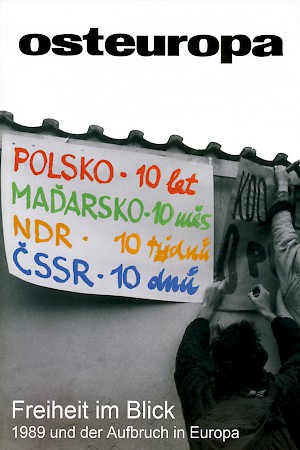History’s Cunning
Perestroika, the Fall of the Berlin Wall, and the end of the Soviet Union
Deutsche Fassung
Abstract
In Germany, Mikhail Gorbachev is considered the architect of unification, in Russia, the destroyer of the Soviet Union. Both processes form a continuous chain of events. The Communist parties’ loss of power in East Central Europe and the end of the Communist Party of the Soviet Union were the result of perestroika in the Soviet Union. Without the CPSU, however, there was no cement to hold the Soviet Union together. The mobilisation of anti-Soviet forces there profited from East Central Europe’s new start. In 1991, it had progressed so far that a majority of the people, including the Communist functionaries, considered the dissolution of the Soviet Union unavoidable.
(Osteuropa 2-3/2009, pp. 119–132)



